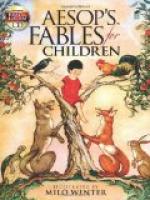|
This section contains 5,125 words (approx. 18 pages at 300 words per page) |

|
SOURCE: John F. Priest, "The Dog in the Manger: In Quest of a Fable," in The Classical Journal, Vol. 81, No. 1, October-November, 1985, pp. 49-58.
In the following essay, Priest discovers the first appearance of "The Dog in the Manger" fable in the 1476/7 collection of Steinhöwel, traces the authority for its inclusion in this edition to the classical writers Lucian and Strato, and rules out known Near Eastern fables and proverbs as possible sources for the fable.'
Locating the historical, cultural and geographical origins of gnomic sayings, is, at best, a precarious enterprise. Emerging as they do from the universals of human experience, proverb, maxim, and fable tend to be both cross cultural and trans-cultural. That "the burnt baby avoids the fire" was as true when fire was discovered or invented as it is today. Detailed folkloristic studies confirm the preceding generality.1 Nevertheless, when a well-known saying is...
|
This section contains 5,125 words (approx. 18 pages at 300 words per page) |

|


